21 things I learnt from becoming a cycling mum
Seven months on from giving birth, CW’s Michelle Arthurs-Brennan shares her experience of striving to stay as fit and healthy as possible before, during and after pregnancy

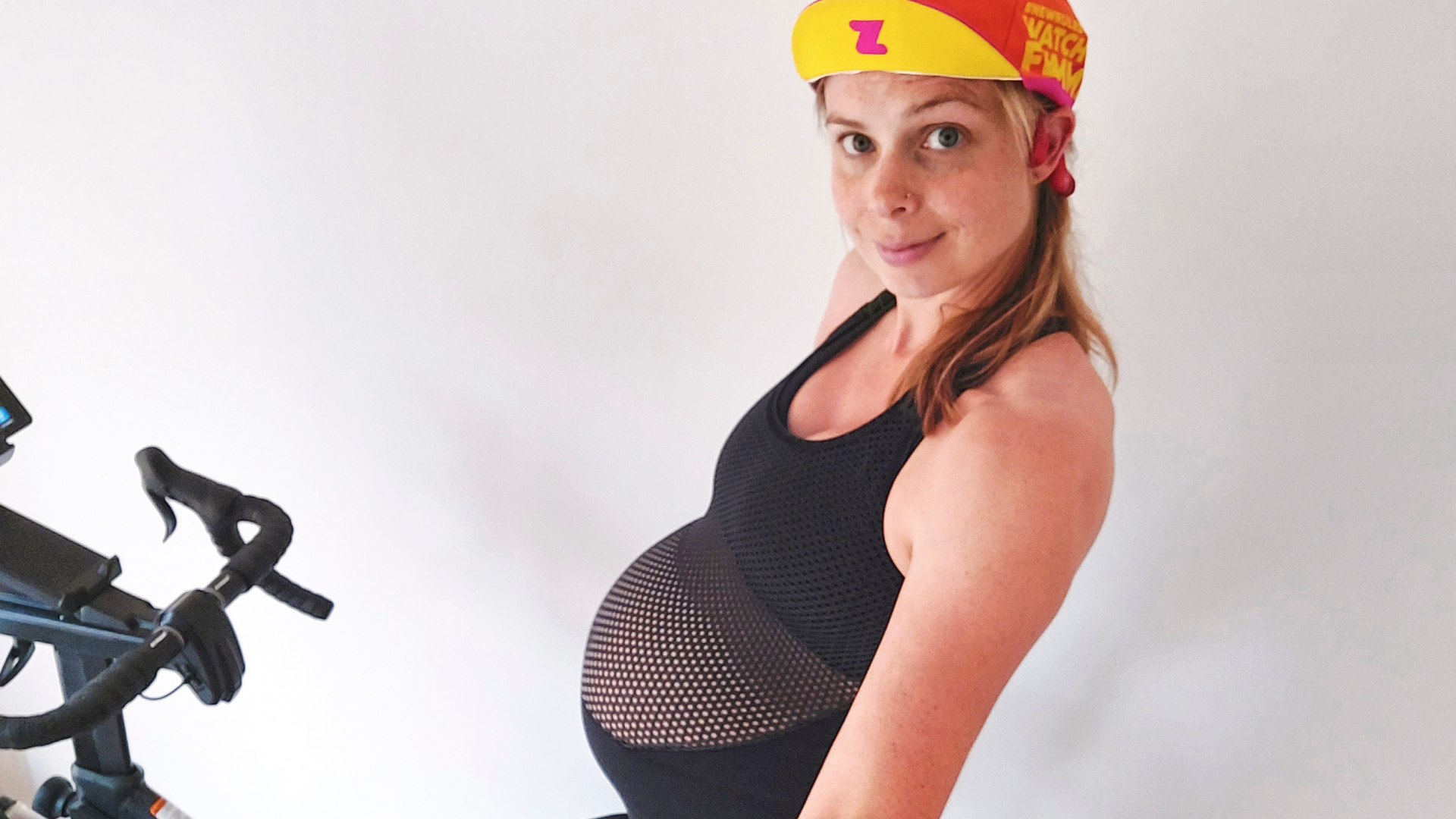
I’d always wanted to start a family, but having raced bikes for over a decade, the prospect of pregnancy and motherhood felt like a great unknown. I knew I’d want to maintain my active lifestyle, but feared that parenthood would spell the end to my adventuring on two wheels. I also had no idea how pregnancy would affect me physically and how difficult it might be to get my fitness back. If any of that sounds familiar, then this feature is for you. Because now that my daughter is all too rapidly approaching her first birthday, I realise that I had nothing – well, almost nothing – to worry about. I’ve quizzed pro cyclists, hormone experts, doctors, bike-fitters and psychologists, to bring you all the tips and advice I wish I’d known from day one.
Pre-pregnancy
1. Fuel up to conceive
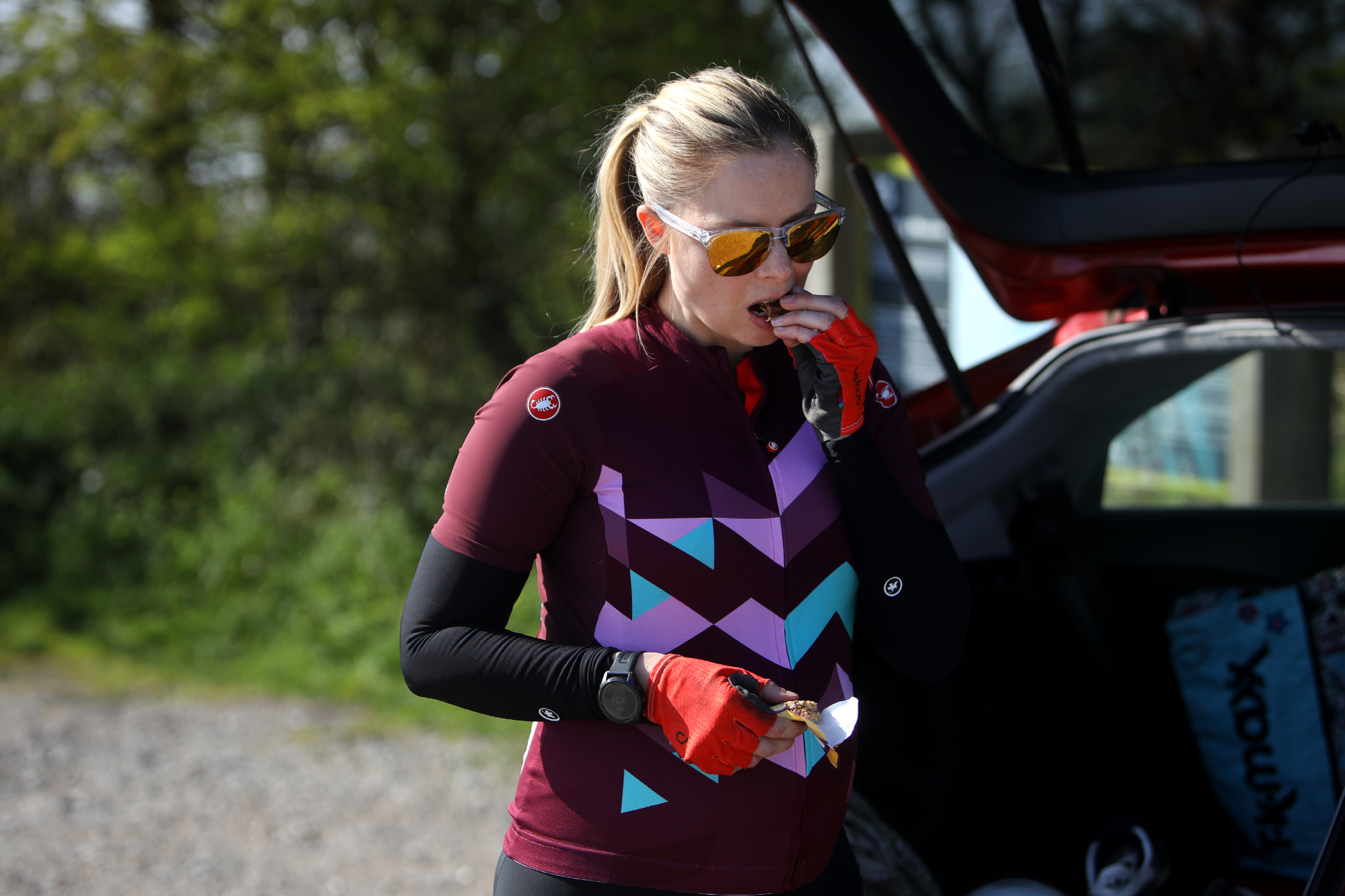
A healthy hormone balance is essential to conception. Our 2019 Cycling Weekly reader survey showed that 30% of female respondents – me included – were putting their hormone health at risk by underfuelling. I resolved the issue by adjusting the timing of my carbohydrate intake. “We have found that being in a state of carbohydrate deficit during the day can lower testosterone in men or oestrogen in women and raise cortisol – switching off the endocrine system, even if eating carbs in the evening,” author of Hormones, health and human potential Dr Nicky Keay told me at the time. Carbs aren’t always the answer, but poor nutrition and recovery are often implicated in hormone imbalances.
2. Get jiggy on cue
Planning training around your menstrual cycle can pay dividends in performance (we covered seven ways ‘traditional’ cycle training approaches don't work for women - and what you can do instead over here). But if you’re trying to conceive, you may be more interested in optimising your extra-curricular activities around the peaks in luteinising hormone and rises in body temperature which occur on each side of ovulation. The best cycling apps like Fitr Woman, or even Garmin Connect, can help you.
3. Be inspired by racing mums

Early in her pregnancy, Elinor Barker competed at the Tokyo Olympics. It was never the plan. “I hadn’t even considered starting a family yet, but when I saw the positive pregnancy test I instantly knew it was exactly what I wanted,” she told CW. Seeing athlete mothers compete provided reassurance. “Getting to watch Laura [Kenny] and Lizzie [Deignan] win big races early on in my pregnancy was the perfect antidote to the stress of an unplanned career break. The day Lizzie won Paris-Roubaix I was struggling with nausea and really having doubts. I watched the whole race horizontally with a sick bucket at hand, but could see what was possible if I kept going,” she said. Barker’s determination paid off: her son was born in March 2022; in August 2022 she raced the Commonwealth Games road race for Wales, before going on to take gold in the Madison at February’s European Track Championships.
4. Know when to hit pause
In an uncomplicated pregnancy, exercise is safe and encouraged, but there are many reasons why you may opt to curtail your regime. “I needed IVF to fall pregnant, and we knew there was a low possibility – around 5% – of it working, so I did everything possible to keep the process and pregnancy smooth,” explained sports psychologist Dr Josephine Perry, who gave birth to her daughter in 2016.
“This meant nothing more than a couple of easy turbo rides a week. While at the time it felt like I was going backwards, and I hated feeling unfit, when I came back from the year long ‘pregnancy pause’ I had far more enthusiasm and joy for cycling, and after 15 years of racing, I really valued the rest it gave my body.”
During pregnancy
5. Master early anxiety
The early weeks of pregnancy can be an anxious time. “I worried a lot in the lead up to each scan or appointment but really found that training helped a lot with that,” Elinor Barker told me. Tradition dictates that you keep your pregnancy secret until the 12-week scan, but I found having friends to confide in – and keep me off Google – far more beneficial than sticking to the ‘rules’.
The latest race content, interviews, features, reviews and expert buying guides, direct to your inbox!
6. Set intensity limits
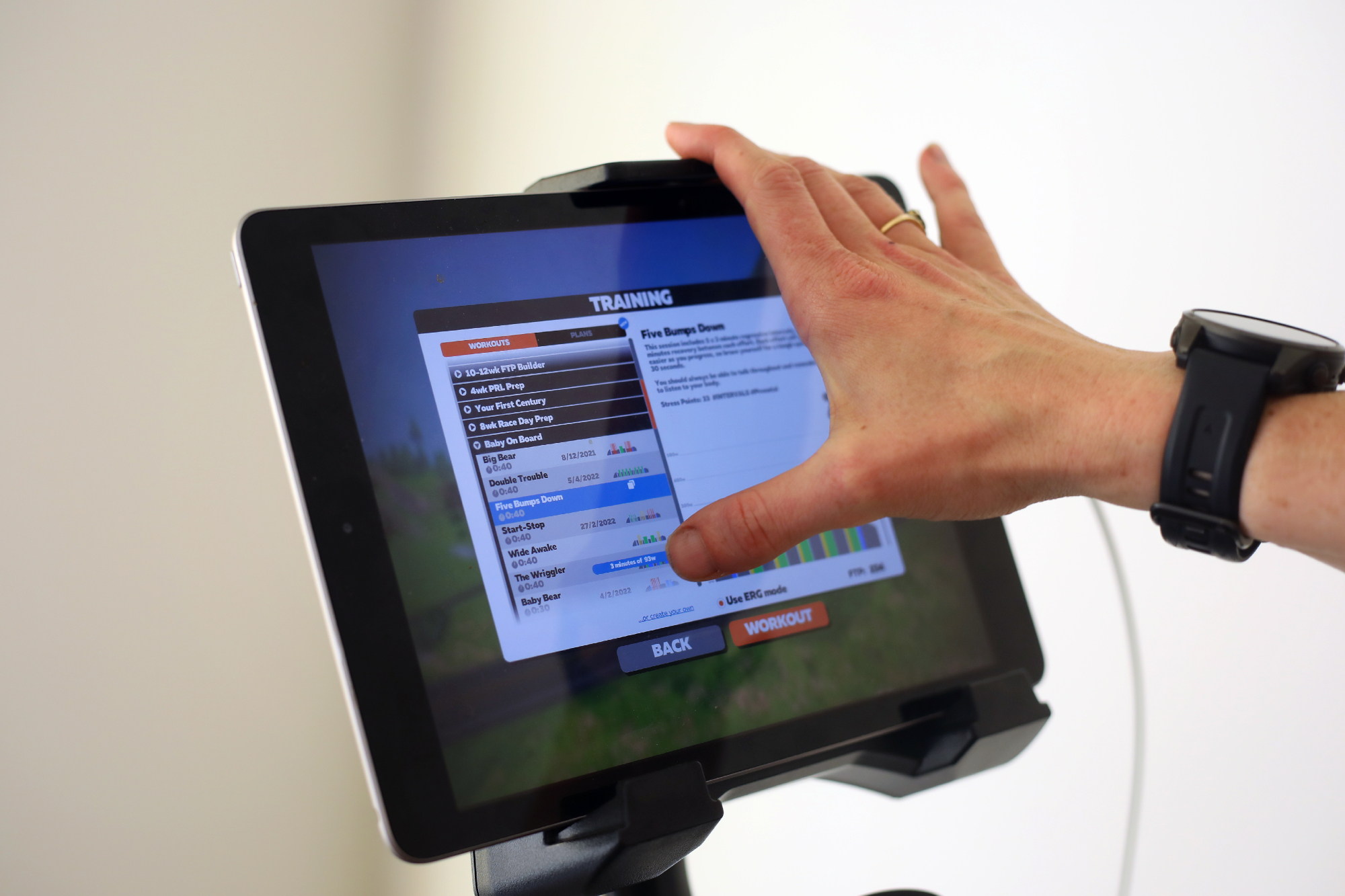
I was keen to keep exercising during pregnancy, but wanted a numerical boundary to prevent me from straying into unsafe intensities. Upon quizzing several experts, 85% of maximum heart rate was the figure that cropped up repeatedly. “We need to be having a regular bloodstream going to the placenta and then to the foetus,” explained Georgie Bruinvels, the research scientist behind the Fitr woman cycle tracking app. Zwift’s Baby on Board sessions were perfect for keeping me motivated without crossing the red line.
7. Listen to your body
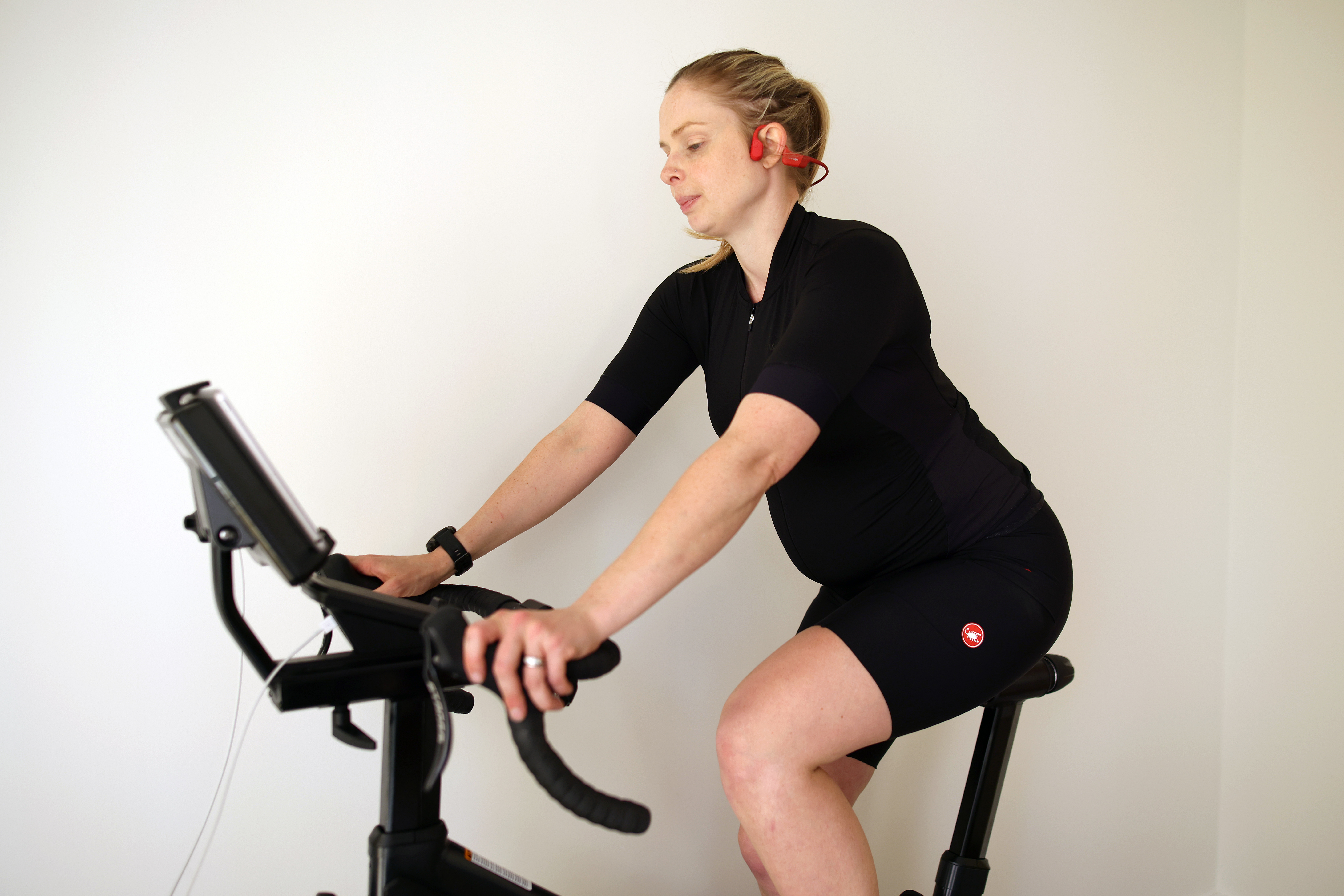
'Listen to your body’ is a common instruction given to pregnant mothers, and initially the directive struck me as infuriatingly vague. It turned out I just needed to listen harder. “I know my body and I’m very sensitive to how I feel, so I trust my own instincts,” former world champion Lizzie Deignan asserted with enviable confidence. Alluding to the spikes and drops in energy and morning sickness that can punctuate pregnancy, she said: “You may feel great one week and completely floored the next. You just have to be completely flexible.”
8. Don’t compare
Is my bump big enough? Too big? Have I gained enough weight? Too much? “A massive thing we all do is compare,” Deignan said. “[But] every pregnancy and every woman is different, it’s just pointless comparing,” she added, clarifying that the same advice applies postpartum. If you’re genuinely worried about something, ask a doctor or your midwife – not Google or Mumsnet.
9. Relaxin ain’t relaxing
The hormone relaxin is elevated during pregnancy - which “as the name suggests, increases ‘stretchability’ of ligaments and tendons,” Dr Keay explains. This serves the function of aiding birth, but has the less helpful byproduct of increasing your vulnerability to injury – a great incentive to focus on core strength, as long as you’re working within your limits and with good form. “Limiting stretching to maintenance stretching is advisable to avoid injury,” Keay adds – and it’s worth being aware that relaxin remains high if you’re breastfeeding.
10. Train for labour
Breathing exercises, positive affirmations and having a (flexible) plan were, I noticed, commonalities between labour preparation and sports psychology. My whirlwind four-hour labour didn’t leave a lot of space for calmly murmuring “I am strong”, but having prepared in advance, I didn’t need too much reminding.
For more advice on staying active whilst growing a little person, read our guide on cycling and pregnancy over here.
Once the baby arrives
11. The finish line is not the birth
When I ran (read: plodded) on the morning my daughter was born – nine days overdue – it felt like I’d crossed the finish line. But there was still a long way to go! “I wish I’d known from the outset that the ‘postpartum’ period is far longer than the six weeks the doctors or Google tell you it is,” Elinor Barker agreed. “Most people see a huge improvement by then, but there’s also a huge expectation to bounce back to your usual self within this time-frame, which is crazy.
At 11 months postpartum, I’m still considered to be a rehabing athlete by my physio team. Pregnancy and childbirth pushed my body to its physical limits far more than any race has done, so it’s understandable that to heal fully will take time.” The early days and weeks can be physically and emotionally demanding – it’s a time to be honest with friends and family about the support you need.
12. Breastfeeding is full-on
I had no idea how all-consuming breastfeeding would be in the early weeks. Nor did I appreciate the physical implications. “Breastfeeding is supported by high levels of prolactin,” explains Dr Keay. “Prolactin has the effect of lowering the female hormones produced during the menstrual cycle, including oestradiol and progesterone.”
Most women who breastfeed don’t resume having periods for some time, and this low hormone state shares similarities with a postmenopausal profile. Keay hits the nail on the head by explaining, “breastfeeding is a high-energy-demand state, and the pause on hormones is nature’s way of putting another pregnancy on hold.”
Changes in hormone profiles can result in rapid changes in mood and feelings of wellbeing. The ‘baby blues’ on day three after birth (when milk ‘comes in’) are well documented, but anxiety and postnatal depression can also crop up during the weaning process, as the cessation of breastfeeding reduces levels of prolactin and oxytocin. The latter is known as the ‘love hormone’ because it makes you feel calm and relaxed. If you are breastfeeding, it’s important to eat well and hydrate plenty – you’re burning somewhere between 300 and 500 extra calories per day while manufacturing up to 900ml (1.5 pints).
13. Redefine ‘enough’
A post shared by Michelle Arthurs-Brennan (@ridewriterepeat)
A photo posted by on
From around 12 weeks postpartum, I began squeezing in an hour of indoor intervals by getting up uncomfortably early in the morning. But then I was exhausted by lunchtime. I needed to rewire my expectations: a session didn’t have to be an intense hour to be regarded as ‘enough’. “The only reason we are told that a workout has to be an hour is because often the classes we pay to go to are an hour,” personal trainer and author of Bumps and Burpees, Charlie Barker laughs. “It’s unlikely that what your body needs right now is an hour-long high intensity workout, and you probably don’t have the time anyway.” For me, taking up new challenges – strength training and running – helped me to enjoy exercise without comparing myself to my previous fitness levels.
14. Catching the ZZZs
OK, we still don’t have sleep nailed in our household. And we all know that sleep is an essential component of recovery. This is a big part of the reason why I’ve been keeping my activities at a much lower intensity than pre-pregnancy. I know that eventually our baby will learn to sleep better – and for now, I go to bed very early and get as much shut-eye as I can. I do track my sleep, but I’m not sure I’d recommend obsessively keeping tabs with a tracker, as this can exacerbate stress. Anyway, rudimentary analysis suggests that sleep-trackers are liable to mistake night-time feeds for REM sleep.
Elinor Barker and her partner opt for ‘shifts’: “Unless Nico is sick, we make sure only one of us is ever awake with him at any one time during the night, so the other can rest,” she tells me, adding, “Good earplugs are invaluable!” Every baby is different – some sleep better than others, as Lizzie Deignan found out with her second.
15. Account for daily activity
Mothering a newborn comes with a lot of associated physical activity. “I have never done as many steps as I did with my first baby, who needed a lot of walking to get him to nap in the buggy and for a while, that counted as my exercise,” confirms author Charlie Barker, adding: “On the days where you didn’t manage to get to the workout you planned, take a second to think about all the movement you do in a day – I guarantee you it’ll be more than you thought.” My Garmin Connect profile shows that I’m covering at least three times as many steps than I was pre-baby, and that’s before we account for inaccuracies of step counters when pushing a pram.
16. Head outside together
A post shared by Michelle Arthurs-Brennan (@ridewriterepeat)
A photo posted by on
I never realised how much of my love of cycling was actually a love of going outdoors, until I found myself restricted. While our little one isn’t old enough to ride in a children's bike trailer just yet, she is old enough to watch the world whizz by from the seat of our Thule running buggy.
17. Roll with the BPM changes
Six months postpartum, my resting heart rate is still 10bpm lower than it was pre-pregnancy and the arches of my feet have dropped. My heart rate confused me, as I’m definitely not fitter. Women’s health expert at Pure Sports Medicine Dr Sarah Rollins suggests: “It may be that your heart gained muscle mass during pregnancy. Overall you aren’t fitter but your heart is pumping more strongly.” My feet were causing me pain until I had some new insoles made.
18. Prioritise your pelvic floor
The pelvic floor and core take a battering during pregnancy and birth. Mums who meet certain criteria will be referred to a women’s health physiotherapist, but if you’re managing well in daily life and looking to return to sport, you may need to fork out for this from your own pocket as I did – and found the personalised advice invaluable.
It’s a course of action recommended by Elinor Barker too. “I had a C-section, which I really hadn’t wanted, but I felt a lot more confident after seeing my physio and she gave me loads of help around diastis recti [ab separation] exercises and C-section scar management that I’m still using now.” If that’s not an option, YouTube is a great resource, adds Barker: “Bunkies [a type of plank] are also a great postpartum exercise, especially if you get hip pain or lower back pain. But take it easy early on and don’t do anything that doesn’t feel right.”
19. Pivot your bike fit
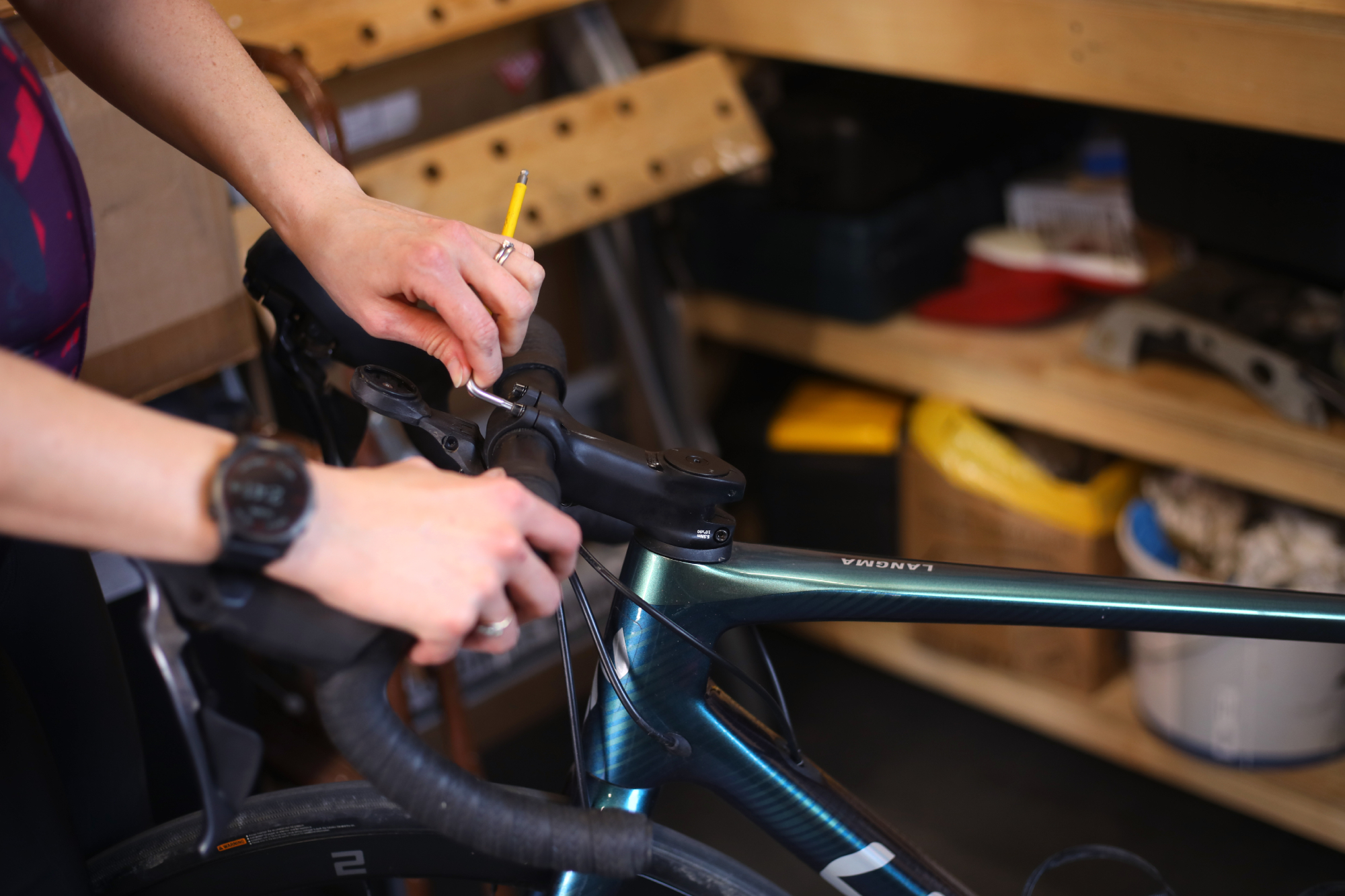
Former British Cycling physiotherapist Phil Burt says: “Giving birth is a pretty traumatic thing for the female body. What worked in the past might not work for you anymore.” You may need to look at changing your bike saddle, while opting for a more upright position could help as you regain core strength. In terms of returning to your previous set-up, Burt adds: “The first thing is to get trunk stability back, as core muscles can be weakened by the ordeal – even more so in the case of a caesarean section.”
20. Make bike commuting a family value
Currently, I try to get my fitness fix during my baby’s first nap of the day – but our routine is constantly changing, and I know I’ll need to adjust my ‘me time’ window as our new life together progresses.
Discussing fitting in exercise around her six-year-old, Josephine Perry told me: “My husband and I try to get most of our training in as active commuting so we still have the weekend for our daughter’s activities. My husband gets his riding in by commuting a long route to the office. I get my training in by running a long route home from the school drop-off.” There’s an educational benefit too: “I love that our daughter thinks travelling under your own steam is totally normal,” adds Perry.
21. One step back, two steps forward
All of us are thrown the odd curveball in our fitness journeys: work deadlines, sickness, family commitments, etc. But motherhood can feel like a constant game of dodgeball. “I think being realistic each day is important,” Elinor Barker tells me. “Some days I’ll surprise myself and manage a good training day on very little sleep. Other times I’ve taken extra days off because the demands of looking after a baby and myself are just too high.” While Barker recommends delegating tasks where you can, sharing night shifts if possible, and planning childcare far in advance, sometimes we just have to accept that it’s not happening. “Some weeks you will be on track with your workouts and activity levels, and then all of a sudden you get hit with teething or a sleep regression or a sickness bug.” Charlie Barker outlines a familiar experience. “It does not mean all the good work has gone to waste, so as soon as you are able to, get back on it, and you’ll still be going in the right direction.” Because everyone knows: mummas don’t give up that easily.
Exercise guidelines for during and after pregnancy
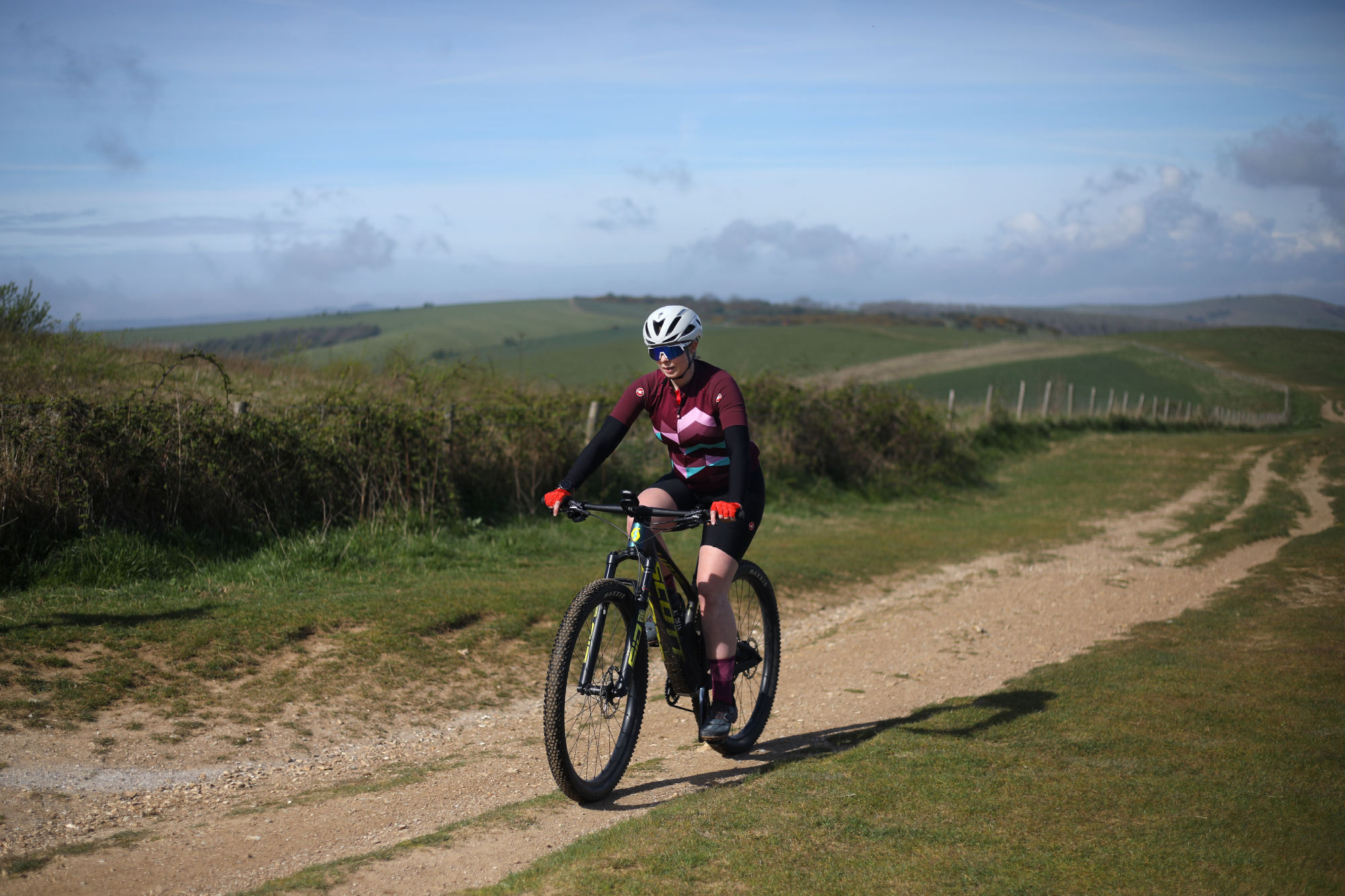
The NHS guidance is clear that exercise during pregnancy is healthy and to be encouraged. “Keep up your normal daily physical activity or exercise (sport, running, yoga, dancing, or even walking to the shops and back) for as long as you feel comfortable,” the guidelines state. “Exercise is not dangerous for your baby. There is some evidence that active women are less likely to experience problems in later pregnancy and labour.”
Things to avoid are exercising at a high intensity (over 85% of your maximum heart rate is the threshold set by many experts), overheating, or becoming dehydrated, as well as exercises which could result in a fall.
The advice for postpartum is to begin gentle exercise “as soon as you feel up to it”, with the caveat: “it’s usually a good idea to wait until after your six-week postnatal check before you start any high-impact exercise.” Running should not be resumed until at least 12 weeks have passed.
A father’s view
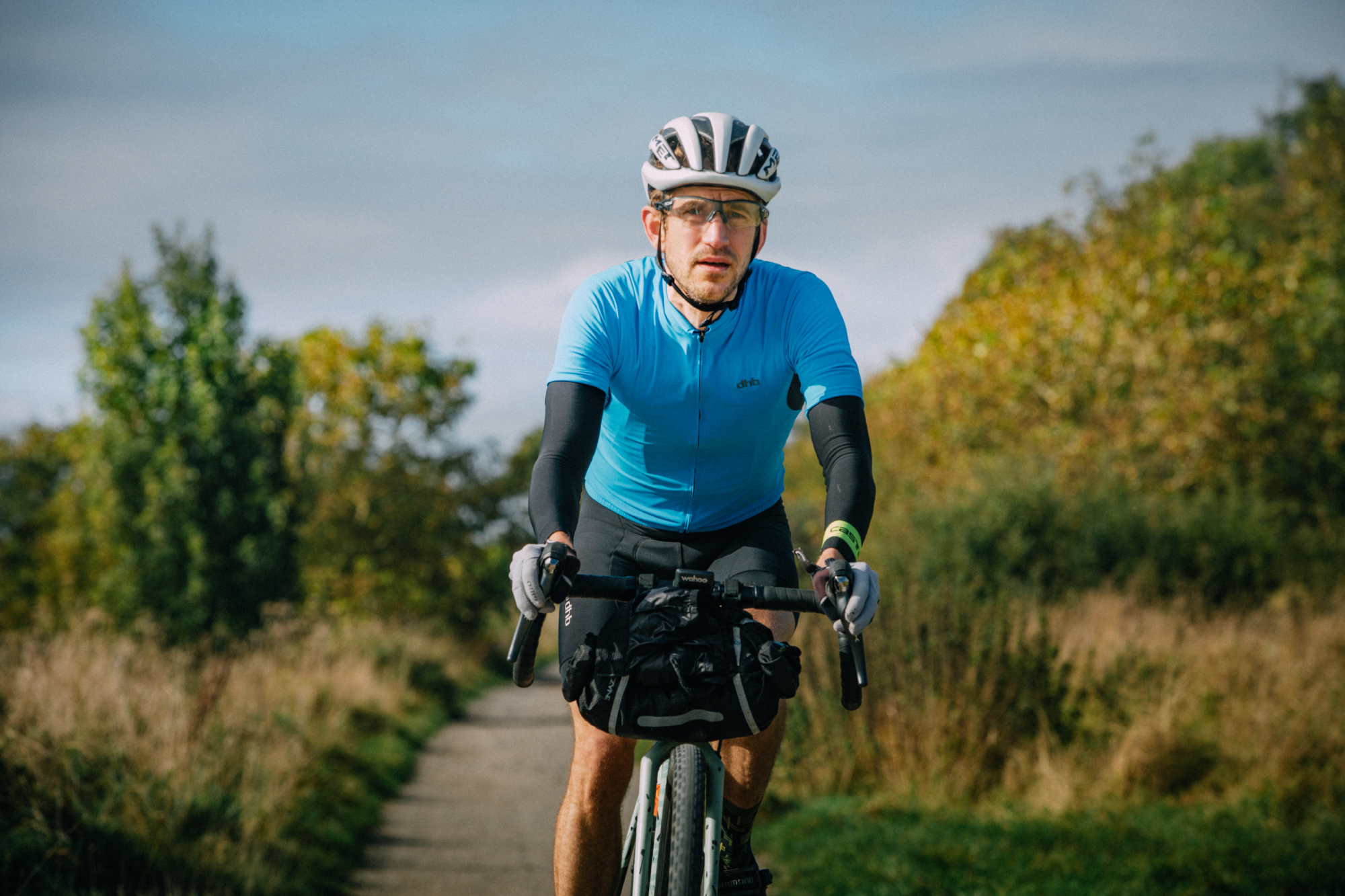
"When our first child arrived at the end of 2016, I thought I was prepared for what was to come," writes CW editor Simon Richardson. "Ha ha ha. How naive.
"I’d decided to stay fit that winter by running, as it was more time-efficient, but in reality I didn’t do much of that either. I had to accept that my cycling, and fitness, was going to take a hit.
"Accepting that really helped. I knew my time would be crunched; what I didn’t know was how little sleep I’d get through that first year, and how that would affect my energy levels. Babies’ sleep patterns vary wildly, of course, but I gained a newfound respect for pro athletes who compete when they have newborns in their household.
"As time went on, it was a case of slowly adding physical activity back into my schedule. Maybe it was just a 20-minute run when mother and baby were napping, or a turbo session during my lunchbreak when the house was empty.
"Six years on, we now have two children, and hours committed to exercise remain far fewer than during the pre-kids era, but as they get older, timetables continue to change as pre-school and school hours come into play.
"My advice is: be flexible, make the most of any exercise you do fit in, don’t sweat it when you miss a ride or a session, and most importantly just enjoy the exercise you do manage to do."
Lizzie Deignan: ‘Baby two - a new set of challenges!’
A post shared by Lizzie Deignan MBE (@l_deignan)
A photo posted by on
Triple Monument winner Lizzie Deignan gave birth to her second child, Shea, in September 2022, and returned to formal training on 1 December.
When CW asked the 34-year-old about her return to fitness, she told us: “I was able to start exercising at about 4.5 weeks postpartum this time. It was six weeks with Orla [her first child] but this time around I just felt I needed it a little bit earlier. I had a natural no complications delivery, which I think helped.
“Training in comparison to the first time has been quite different. With Orla, I didn’t gain as much weight during pregnancy and I was able to keep up a higher level of fitness, so my starting point was higher. And then with Shea I gained a lot more weight and it’s taken longer to come off. But then again the difference in babies – Shea was an easier baby, in that he slept so much better so much earlier – means that I have had more energy in the postpartum period this time, so I am actually at a very similar point now in fitness, comparing the two comebacks. I have been surprised by my progress. I did an FTP test the other day and the numbers were really high – I was pleasantly surprised. Then the next day my body was so sore and I think actually my aerobic capacity, my heart and my lungs are much stronger than my body can back up, so physically I’m still missing a bit of muscle tone, but underneath the surface I guess the engine is still good!”
This full version of this article was published in the print edition of Cycling Weekly. Subscribe online and get the magazine delivered direct to your door every week.
Michelle Arthurs-Brennan the Editor of Cycling Weekly website. An NCTJ qualified traditional journalist by trade, Michelle began her career working for local newspapers. She's worked within the cycling industry since 2012, and joined the Cycling Weekly team in 2017, having previously been Editor at Total Women's Cycling. Prior to welcoming her first daughter in 2022, Michelle raced on the road, track, and in time trials, and still rides as much as she can - albeit a fair proportion indoors, for now.
Michelle is on maternity leave from April 2025 until spring 2026.
